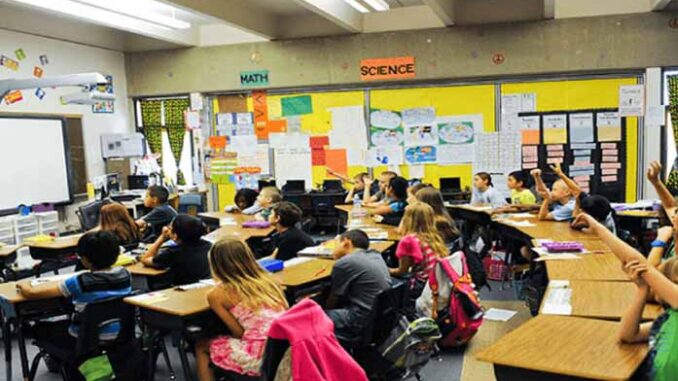
According to the Arizona office of the International Rescue Committee, we should be prepared for hundreds of new arrivals in our state from Afghanistan within the next several months. That would be in addition to the thousands of immigrants who are fleeing over our southern border – from not only Spanish-speaking countries but from places as far away as southeast Asia and Africa. Many children are arriving with their parents; others, unaccompanied.
Our schools must be prepared to teach English to this huge influx of students. The best way would be through structured English immersion (SEI), the method required by Arizona Revised Statute 15-753. This law calls on schools to “place in the same classroom English learners of different ages but whose degree of English proficiency is similar and then transferring them to mainstream classes after they have acquired a good working knowledge of English.” The students are taught the structure and vocabulary of English while also learning the regular curricula through simplified English and/or extra assistance from teachers well-trained in SEI techniques.
Such instruction makes sense to anyone who has actually mastered a second language. State Representative Quang Nguyen, himself a refugee from Viet Nam, stated it well at the most recent AZ House Education Committee meeting. He explained passionately that learning a second language is an “option” for English speakers, whereas learning English is a “necessity” for immigrant children who have come to this country, as he did, not knowing the language.
Nguyen voted to keep the English immersion law; education committee chair Michelle Udall voted to have it rescinded. Like Arizona Superintendent of Public Instruction Kathy Hoffman, she favors dual-language instruction over SEI for limited-English speakers.
In a dual-language program, such as one that focuses on English and Spanish, a small group of English-dominant students shares instruction with a much larger group of Spanish-dominant children, with the purpose of both groups becoming bilingual in both languages. In the early grades, a time when children can most easily learn a second language, most often, 90% of the instruction per day is in Spanish with only 10% in English! Quite predictably, the children from English-speaking homes develop fluency in Spanish, while the children from Spanish-speaking homes end up too weak in English to ever catch up to their English-proficient peers.
It is important to note that these programs are funded with federal and state dollars meant for the limited-English students to become English proficient – not for English-dominant students to learn Spanish or any other second language.
Not until Tom Horne became elected as Arizona Superintendent of Public Instruction in 2002 was the immersion law actually enforced. He provided teachers with training in immersion techniques and set up a department that followed up with frequent monitoring of the schools. As a result, the students’ yearly English proficiency rate shot up from 4% to an average of 29% while Horne was still in office.
Unfortunately, Horne’s successors did not maintain what he had worked so hard to create.
With so much at stake, it is disturbing that Representative Udall and Superintendent Kathy Hoffman are turning a deaf ear to this urgent situation. Hopefully, voters will consider this when voting in 2022.
Johanna J. Haver is a former Maricopa County Community College Board member (2015 to 2019). She is the author of Vindicated: Closing the Hispanic Achievement Gap Through English Immersion (Rowman & Littlefield, 2018). She taught English learners for 19 years in the Avondale public schools and in the Phoenix Union High School District.
